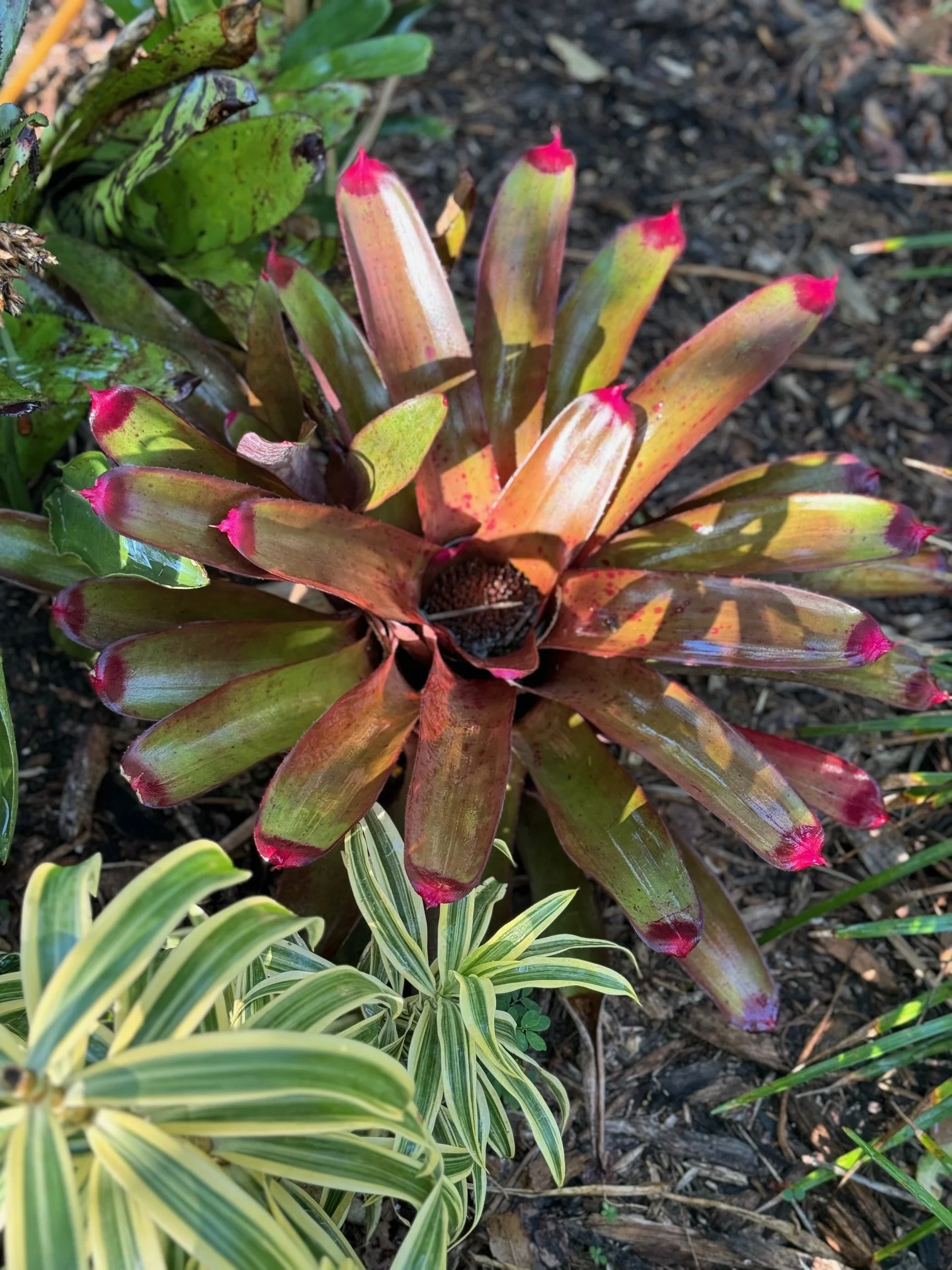Plant Care
Light
Indoor: Bromeliads prefer bright, indirect light. Place them near a window with filtered sunlight, such as an east or west-facing window. Avoid direct sunlight, which can scorch the leaves.
Outdoor: If grown outdoors, place them in a shaded or partially shaded area where they can receive dappled sunlight. Avoid direct midday sun.
Water
Tank/Reservoir: Most bromeliads have a central tank or reservoir where water should be kept. Fill the central cup with water and refresh it regularly to prevent stagnation and algae growth. Empty and refill the tank every 1-2 weeks.
Soil: Keep the soil consistently moist but not soggy. Water the soil lightly and allow it to dry slightly between watering. Avoid overwatering, as this can lead to root rot.
Humidity: Bromeliads thrive in high humidity. Mist the leaves regularly or place the plant on a humidity tray to maintain moisture levels. Indoor humidity levels between 40-60% are ideal.
Soil
Use a well-draining, airy potting mix. A mixture of orchid bark, perlite, and peat moss works well. Avoid heavy, moisture-retentive soils.
Temperature
Bromeliads prefer warm temperatures between 60-80°F (15-27°C). They can tolerate short periods of cooler temperatures but should be protected from frost and freezing conditions. Ideal growing zones are USDA 10-12.
Fertilization
Feed bromeliads lightly during the growing season (spring and summer). Use a balanced, diluted liquid fertilizer every 4-6 weeks. Apply the fertilizer to the soil or lightly spray it on the leaves, avoiding the central cup. Do not fertilize in the fall and winter months.
Pruning and Maintenance
Remove dead or damaged leaves with clean, sharp scissors to maintain the plant’s appearance and health.
Bromeliads produce offsets (pups) at the base of the plant. Once these pups are about one-third the size of the mother plant, they can be separated and replanted.
Pests and Diseases
Bromeliads are generally pest-resistant but can occasionally attract mealybugs, scale, and aphids. Treat infestations with insecticidal soap or neem oil.
Prevent fungal diseases by ensuring proper air circulation and avoiding overwatering.
Repotting
Bromeliads do not require frequent repotting and can thrive in the same pot for several years. Repot when the plant becomes root-bound or when separating pups. Use a pot with drainage holes to prevent waterlogging.
Blooming
Bromeliads typically bloom once in their lifetime. After blooming, the mother plant will gradually decline and produce offsets. The flower spike can last several months. Once it fades, it can be trimmed back to encourage the growth of new pups.
Additional Tips
Water Quality: Use distilled, rain, or filtered water to avoid mineral buildup, which can damage the plant.
Air Circulation: Ensure good air circulation around the plant to prevent fungal issues and promote healthy growth.
Non-Toxic: Bromeliads are non-toxic to pets and humans, making them a safe choice for households with animals and children.
With their stunning foliage and minimal care requirements, bromeliads are a fantastic addition to any indoor or outdoor garden. By following this care guide, you can enjoy the beauty of these tropical plants for years to come.











